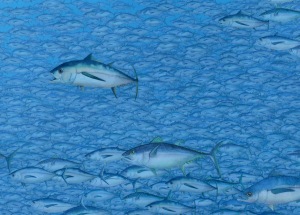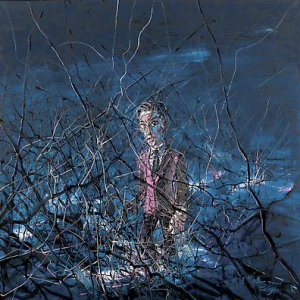
The Cleveland Institute of Art is holding its annual CIA Spring Show, and it is nothing short of inspiring. When I walked through the exhibits, glossy marketing posters shone under the white curvilinear walls in Case Western University’s Peter B. Lewis Building (designed by Frank Gehry, by the way). I snuck a peak at Industrial Design, Interior Design, Communication Design and small portions of Ceramics, Enameling, Glass, Jewelry + Metals.
In the Design Environment, there were re-styled foodmarts based on adult vs. teen preferences, an American Greetings kiosk which merged their card selection and a candy outlet, ergonomic chairs (that often looked really uncomfortable), re-thought ways to re-brand hip-hop music from illicit lyrics to clean lyrics, restyled totes/water bottles/coffee mugs, and wallpaper inspired by Viktor Schreckengost, the industrial engineer who was an instructor at the Cleveland Institute of Art. (Another aside: Schreckengost was a powerhouse. His foundation’s webpage says this about his work: “Every adult in America has ridden in, ridden on, drunk out of, stored their things in, eaten off of, been costumed in, mowed their lawn with, played on, lit the night with, viewed in a museum, cooled their room with, read about, printed with, sat on, placed a call with, enjoyed in a theater, collected, been awarded with, seen at a zoo, put their flowers in, hung on their wall, served punch from, delivered milk in, read something printed on, seen at the World’s Fair, detected enemy combatants with, written about, had an arm or leg replaced with, graduated from, protected by, or seen at the White House something created by Viktor Schreckengost”.)
All in all, it was an inspiring show. Now I’m really ready to figure out how to satisfy that 20-years-long design annoyance: how to create a nailpolish bottle and a brush long enough to scoop up that last bit at the bottom?

















